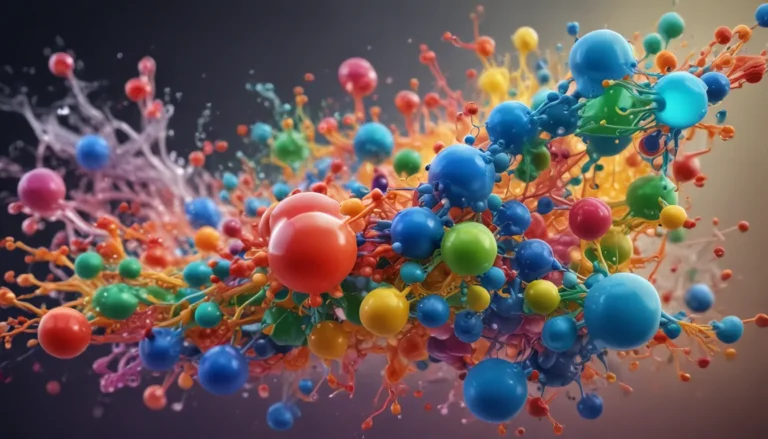A Note About Images: The images used in our articles are for illustration purposes only and may not exactly match the content. They are meant to engage readers, but the text should be relied upon for accurate information.
In the dynamic realm of sports, the issue of doping has long been a contentious topic, stirring up controversy and fascination alike. Athletes striving for peak performance often turn to performance-enhancing substances to gain a competitive edge, thereby thrusting themselves into a shadowy world of secrecy and intrigue.
Embark on a journey with us as we uncover the enigmatic facets of doping, shedding light on 11 captivating facts that illuminate this unethical practice. From the historical roots of doping to its health ramifications and the ongoing battle against it, we will delve deep into the complex tapestry of doping, where competition, science, and morality intertwine.
Doping Through the Ages
Doping is not a modern invention but rather a practice that traces its origins back to ancient times. In ancient Greece, athletes sought to enhance their performance by consuming substances like herbal infusions and animal hearts, setting a precedent for the use of performance-enhancing methods.
A Multifaceted Arsenal
Contrary to popular belief, doping substances do not solely come in the form of pills or injections. They can manifest in various guises, including creams, gels, patches, and even intravenous drips, enabling athletes to circumvent traditional detection measures.
The Vanguard Against Doping: World Anti-Doping Agency (WADA)
Established in 1999, WADA stands as a stalwart bastion in the fight against doping, spearheading efforts to enforce anti-doping regulations, conduct research, and educate stakeholders about the perils of doping.
Perilous Health Implications
The use of performance-enhancing substances exacts a heavy toll on athletes, precipitating a myriad of health complications such as liver damage, cardiovascular issues, hormonal imbalances, and psychological disorders.
A Pervasive Issue
While the spotlight often shines on doping in professional sports, the practice extends its tendrils to encompass amateur athletes and recreational enthusiasts alike, underscoring the widespread nature of the problem.
The Underworld of Organized Crime
The illicit trade of doping substances has burgeoned into a lucrative enterprise intertwined with organized crime networks, amplifying the intricacy and danger associated with combatting doping.
The Cat-and-Mouse Game of Detection
With doping methods perpetually evolving, anti-doping bodies must continually innovate and refine testing techniques to unmask banned substances and methodologies.
The Specter of Systemic Doping
Certain countries have been implicated in orchestrating systemic state-sponsored doping programs with the aim of gaining a competitive edge in international sporting arenas, spotlighting the insidious nature of institutionalized doping.
Reputational Ramifications
Numerous esteemed athletes have fallen from grace due to doping scandals, tarnishing their reputations and prompting their disqualification from competitions, serving as cautionary parables for aspiring athletes.
The Contentious Realm of Therapeutic Use Exemptions (TUEs)
The issuance of TUEs permits athletes to utilize prohibited substances under legitimate medical circumstances. However, concerns regarding the abuse and manipulation of TUEs have cast a shadow over the notion of fair play in sports.
The Unrelenting Battle
Despite arduous endeavors to eradicate doping, the scourge persists in the sporting landscape, necessitating perpetual research, education, and stringent enforcement to combat this unethical practice.
In summation, doping remains an intricate and formidable conundrum in the domain of sports, encompassing historical antecedents, health hazards, and the ceaseless fight against doping. Cooperation among athletes, sports organizations, and anti-doping agencies is imperative to uphold the tenets of fair and clean competition.
Upholding Integrity in Sports
As we navigate the enigmatic realm of doping, we are impelled to reflect on the critical nuances that underscore this contentious issue. From the annals of history to the contemporary battleground of detection and repercussions, the 11 enigmatic facts about doping illuminate the convoluted landscape of doping. They accentuate the imperative of stringent anti-doping measures, ethical competition, and the pursuit of equity in sports.
Amidst the escalating skirmish against doping, it is incumbent upon us to remain informed and conscientious about the challenges and ramifications of doping. By assuming an active stance, we can champion the cause of fair and equitable competition, safeguarding the sanctity of sports for future generations.
FAQs
-
What is doping?
Doping denotes the utilization of prohibited substances or methods to enhance athletic performance. -
Why do athletes resort to doping?
Athletes may turn to doping to gain a competitive advantage, bolster endurance, expedite recovery, or augment strength. -
How is doping detected?
Doping is discerned through an array of methods, encompassing urine and blood tests, biological passport analyses, and targeted testing. -
What are the repercussions of doping for athletes?
Athletes found culpable of doping face penalties such as disqualification, suspension, forfeiture of titles and medals, and besmirchment of their reputation. -
Are all athletes subjected to doping tests?
While not all athletes undergo doping testing, anti-doping organizations institute random and targeted testing initiatives to espouse fairness and deter doping. -
Can certain substances be legally used for medical purposes?
Indeed, certain substances are permissible for legitimate medical necessitations and necessitate therapeutic use exemptions (TUEs) for athletes to utilize them. -
To what extent are anti-doping measures efficacious?
Anti-doping measures have markedly progressed and become more stringent over time. However, the ceaseless rivalry between dopers and anti-doping authorities poses a formidable challenge to complete eradication. -
What role do sports organizations play in combating doping?
Sports organizations assume a pivotal role in instituting and enforcing anti-doping policies, conducting testing, and propagating awareness about the dangers and repercussions of doping. -
Is doping exclusive to professional athletes?
No, doping pervades all strata of sports, from professionals to amateurs, propelled by the pursuit of success and societal pressures. -
Can emerging substances or methodologies evade detection?
As the landscape of doping evolves, nascent substances or methodologies may initially evade detection, necessitating perpetual research and refinement of testing techniques to outmaneuver doping practices. -
How can individuals contribute to the fight against doping?
Individuals can bolster the fight against doping by fostering awareness, championing clean and equitable competition, reporting suspicions, and advocating for rigorous anti-doping measures.
In closing, the intricate tapestry of doping unfurls before us, presenting a manifold of dimensions that beckon our scrutiny. By confronting the complexities and challenges of doping head-on, we forge a path towards a future imbued with integrity, fairness, and unabated commitment to the purity of sports. Let us stride forward hand-in-hand, as guardians of the sporting realm, upholding the ethos of ethical competition and unyielding sportsmanship.






